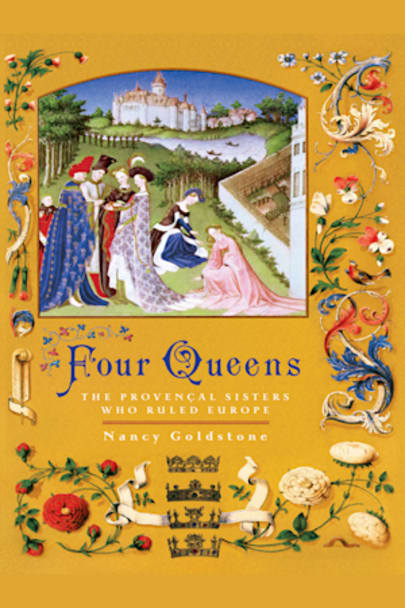For fans of Alison Weir and Antonia Fraser, acclaimed author Nancy Goldstone’s thrilling history of the royal daughters who succeeded in ruling—and shaping—thirteenth-century Europe Set against the backdrop of the thirteenth century, a time of chivalry and crusades, troubadors, knights and monarchs, Four Queens is the story of four provocative sisters—Marguerite, Eleanor, Sanchia, and Beatrice of … Sanchia, and Beatrice of Provence—who rose from near obscurity to become the most coveted and powerful women in Europe. Each sister in this extraordinary family was beautiful, cultured, and accomplished but what made these women so remarkable was that each became queen of a principal European power—France, England, Germany and Sicily. During their reigns, they exercised considerable political authority, raised armies, intervened diplomatically and helped redraw the map of Europe. Theirs is a drama of courage, sagacity and ambition that re-examines the concept of leadership in the Middle Ages.
more



The flow of the narrative made this book very readable, and feel almost like reading a novel in places. While sometimes the book revolved more around the sisters’ husbands than themselves, this can be attributed to the nature of the available historical sources. By taking the sisters as her subject, Goldstone is able to show the depth and intricacy of thirteenth century international relations. While many books fixate on one ruler or one country, this book highlights the often ignored connections that so strongly influenced decisions and policies affecting people’s lives. Goldstone reconstructs a vivid picture of the power and influence thirteenth century women held in the governing of their and other nations.
The subtitle of this book, “The Provencal Sisters who Ruled Europe” was certainly an eye-catcher, and I picked it up, wondering how I could have missed such a provocative theme in my historical readings. Well, in the end, I would say the subtitle was a bit too ambitious. Although these high-profile women certainly played a significant role in the thirteenth century, to say they ruled Europe didn’t even pan out in the reading. Some had more impact than others. Eleanor, wife of King Henry III, was more infamous than influential; the English certainly didn’t appreciate her. Marguerite, queen of Louis IX was overshadowed by her mother in-law Blanche of Castile—who really did rule France for a quarter century; Marguerite couldn’t live up to Blanche’s legacy. Sanchia, married to Richard, Earl of Cornwall (brother to Henry III) was neglected—possibly disliked—by her husband; she only became queen late in life when he was elected King of Germany, mostly a ceremonial post. The fourth daughter, Beatrice married Ramon Berenguer IV, Count of Provence who was perfectly capable of calling the shots, right or wrong. She gladly supported him every step of the way.
Of course, I am oversimplifying what took a full volume to tell. The book alternated, chapter to chapter, between the four daughters, bringing their stories forward chronologically. I like this format; there was no confusion between the women, yet everything made sense in its correct order when they happened to be together in a chapter. What I liked best was the description of Louis IX’s ill-fated crusade. To give Marguerite credit:
“Gentlemen,” she said, “for God’s sake, do not leave this city; for it must be plain to you that if we lose it the king and all those who have been taken captive with him would be lost as well. If this plea does not move you, at least take pity on the poor weak creature lying here, and wait till I am recovered.”
The gentlemen were moved, but not enough to change their minds. “My lady, what can we do? We’re dying of hunger in the city,” they replied.
Marguerite saw her opening. “I will order all the food in this city to be bought in my name, and from now on will keep you all at the king’s expense,” she continued.
They knew she had the money—indeed, they had brought it themselves. According to Matthew Paris, the French at Damietta had received “as much money in talents, sterling coin, and money…as eleven wagons, to each of which were four strong horses, could be loaded with.”
Her bribe was accepted. It cost her 360,000 livres, but the French held Damietta.
This was immediately after she gave birth and was still abed. She was one intrepid gal! So each of the queens contributed to their husbands’ cause as best they could. Eleanor even traveled to France to raise money and troops to save her captive husband. It is interesting that four such influential women were sisters, though sibling rivalry did enter into their relationship. I found this book very readable and it certainly covered events I hadn’t bumped into before.